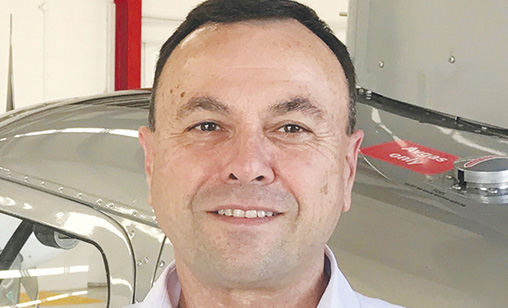Industry Insight Special Report
Airways Aviation ‘Down Under’ seeks Asia’s business
Asia-Pacific demand for cockpit training facilities continues to grow. Global training company, Airways Aviation, has established a facility in Queensland and intends to be a major force in crew training in the region.
July 1st 2017
Opened in 2014 at a facility on the southern Queensland coast, Airways Aviation’s cadets are mostly individuals from Asia paying their way through their courses in the hope of working as commercial airline pilots. Read More »
But this strategy is about to broaden, the new general manager of the Australian arm of the training group, Leo O’Reilly, told Orient Aviation last month. “We are bidding for a couple of large airline contracts and are shortlisted for one of those. The client is looking to send up 48 pilots a year to train in Australia. We have got a fairly good chance of getting them,” he said.
 |
The company is no new newcomer to the pilot training business. Operating for some 30 years, it has flying academies in Oxford, England, at Huesca-Pirines airport in Spain and at Podgorica in Montenegro. It also has 15 pilot recruitment centres worldwide. Dubai’s Emirates Airline is a client. “We put 2,000 pilots through the assessment process in two years for Emirates. We want to do that for every airline,” O’Reilly said.
The Australian training school offers a fleet of six Cessna 172s for basic training, one single-engine Austrian-manufactured Diamond DA40, and one twin-engine DA 42 with full-glass cockpit, recently ferried to Australia from Jordan. At a facility near Brisbane airport there is a fixed-based Boeing B737 simulator while basic training is done at Caloundra, 90kms north of Brisbane, an area outside controlled airspace.
“I am planning to develop Caloundra into my training base so we need to build a new facility, hangar and purpose built student accommodation,” he said. Airways Aviation has courses from recreational pilot licence and private pilot licence qualifications to a commercial pilot licence, multi-engine instrument rating and the “frozen” Air Transport Pilots Licence (ATPL). A “frozen” ATPL means students have been awarded a licence but do not have the experience levels required. The licence becomes unfrozen when they return to their airlines, record more simulator hours and fly as first or second Officers on the line.
“We are looking at buying a full-motion (B737) simulator and a cabin crew trainer. When we have a full-motion simulator, a fixed-base simulator and one cabin simulator the centre will be full and I’ll be looking to expand to two fixed-base, two full-flight and two cabin trainers facility,” he said.
Airways Aviation’s O’Reilly believed its value is its detailed pilot selection process that begins with a Compass computerized aptitude screening and video interview and progresses, for successful candidates, to a two week series of flights that determines a student’s ability to fly. If airlines elect to do the flight grading students are graded either red, amber or green.
“If they are rated green we give them a flight guarantee, a financial guarantee that they will complete their course in a lesser number of hours, therefore at lower cost,” said O’Reilly.
“When an airline sends all green students we guarantee to graduate them at a certain cost. If they make it a selection of amber and green, the course costs increase depending on the number of amber students to be trained.
“And if they do want to send us red candidates, who score well in some elements of the test but might miss out on others, such as the mathematics, we are designing a course to remedy deficiencies,” O’Reilly said.